

- Nyírő Lajos közös képviselő a 3-as “sárga” ház tetején. Magyarországon sem a Y-házak építése előtt, sem utána nem épültek hasonló társasházak. // Lajos Nyírő, the community representative on top of the “yellow” house under No.3. No similar houses have ever been built in Hungary, neither before nor since the construction of Y-Houses.
- Vivien és Cintia a 19-es “fehér” ház előtt. // Vivien and Cintia in front of the “white” house under No.19.
- Pethő Mária gyermekkori portréja lakása nappalijában, az 5-ös “piros” ház A szárnyában, ahová 1974 júliusábán költöztek be férjével. Mária három éve él egyedül. // Childhood portrait of Maria Pethő in her apartment of the “red” house under No.5, located in the “A” wing of the estate. Maria and her late husband moved in to this apartment in July, 1974. She has lived alone for the past three years.
- Pintér Ferenc több Y-ház közös képviselője. // Ferenc Pintér is the community representative of more than one Y-houses.
- Húsvéti pálinka a hagyományos fadíszítést követően. // Y-houses’s resident drinks a home brewed palinka after the decoration of traditional easter tree.
- Katalin kutyája a 17-es “sárga” ház A szárnyában. // Katalin’s dog sits in her apartment located in the “A” wing of the “yellow” building under No.17.
- Pintér Ferenc közös képviselő és Kovács László a 11-es “zöld” ház előterében díszitik a lakóközösség karácsonyfáját. // Ferenc Pintér community representative and László Kovács decorating the Christmas tree of the house in the entrance hall of the “green” building under No.11.
- Kamondi Ernő, 9-es “sárga ház”, B szárny. Ernő 30 évig dolgozott minőségellenőrként a bauxitbányában. // Erno Kamondi, “yellow” house under No.9.
- Az 1-es számú “kék” ház bejárata. A 10+1 emeletes Y‐házak a város keleti szélén, az egykor „Bauxitvárosnak” nevezett lakótelepen épültek fel. // The entrance of the “blue” house under No.1. The 10 plus 1 storey Y-Houses were built at the Eastern edge of the city, where the late housing estate, called “Bauxite town” had been erected.
- Nagy Krisztián a 9-es „sárga” ház edzőtermében. Az Y-házak legfelső emeleteit közösségi tereknek tervezték. // Krisztián Nagy in the workout area of the “yellow” house, under No.9. The uppermost floors of the Y-Houses were designed to be communal spaces.
- A 81 éves Hatos Ottó 10 éve költözött az 5-ös “piros” ház C szárnyába, miután fia után felesége is elhunyt. // Ottó Hatos, aged 81 has moved into the “C” wing of the “red” house under No.5 following his wife’s death, who died after their son was already deceased.
- Istvánné Katalin több mint 44 éve él ebben a lakásban. Férje 25 évvel ezelőtt hunyt el, és azóta egyedül él. // Mrs. Istvan Katalin has been living in this apartment for over 44 years. Her husband passed away 25 years ago, and she has been living alone since that time.
- Lépcsőházi sarok a 9-es “sárga” házban. A bauxit bánya megszűnése után az önkormányzat vette át a házakat, de a fenntartási nehézségek miatt később a lakásokat folyamatosan értékesítették. // Turn of a staircase in the “yellow” building under No.9. When the bauxite mine was closed, the houses ownership was assigned to the local government, but owing to difficulties with their maintenance the apartments have continuously been sold out.
- Futó Balázs Cadillac-je mellett a 7-es “zöld” ház bejáratánál. Az Y-házak építése kísérlet volt egy jobb életminőségre, az épületek magasabb értéket képviseltek formailag is, mint az ekkor kialakított paneles lakótelepek. // Futó next to his Cadillac at the entrance of the “green” house under No.7. The construction of the Y-Houses was an attempt to provide better conditions for the residents. The buildings represented a quality superior to that of the estates consisting of panel houses.
- Halász Tibor a 7-es “zöld” ház előterében. A házak eredetileg többféle színben pompáztak, mára azonban jelentősen megváltoztak mind külsőleg, mind a lakóközösségek terén is. Bár sokan élnek itt az első beköltözés óta, a lakók cserélődése egyre gyorsul. // Tibor Halász stands in the front of the “green” house under No.7. Originally the houses were colored in different schemes but they have changed a lot both from the outside and regarding their tenants. Although many residents have lived here since the apartments were assigned to their tenants for the first time, fluctuation of the residents is speeding up.
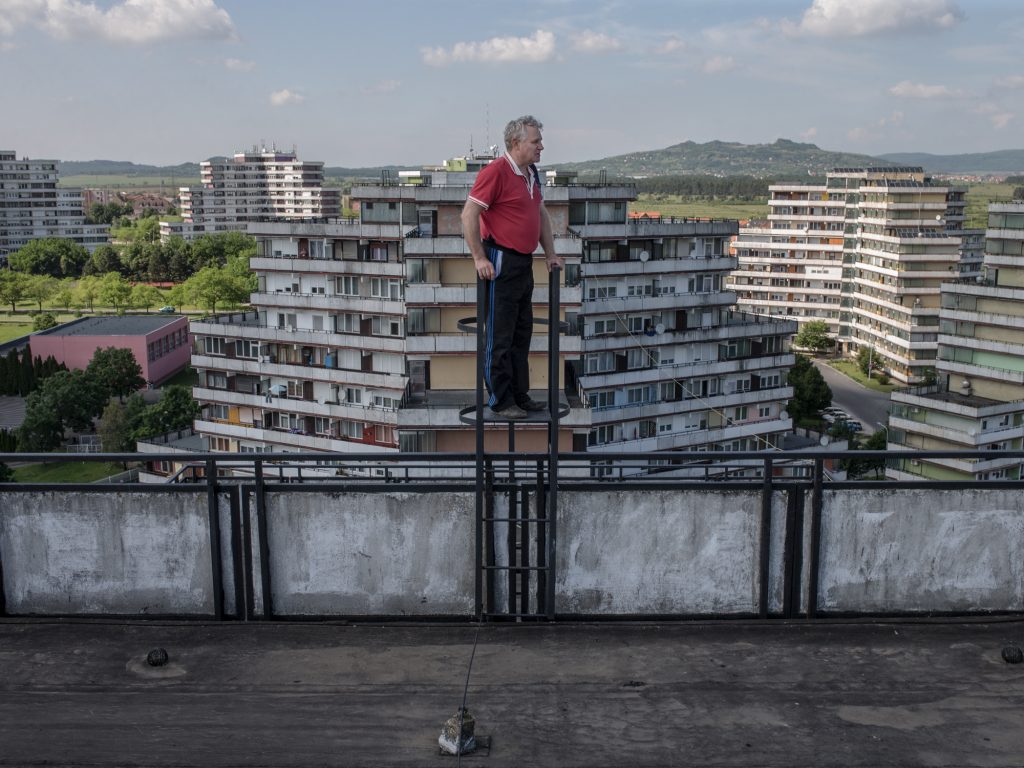
Lajos Nyírő, the community representative on top of the “yellow” house under No.3. No similar houses have ever been built in Hungary, neither before nor since the construction of Y-Houses.
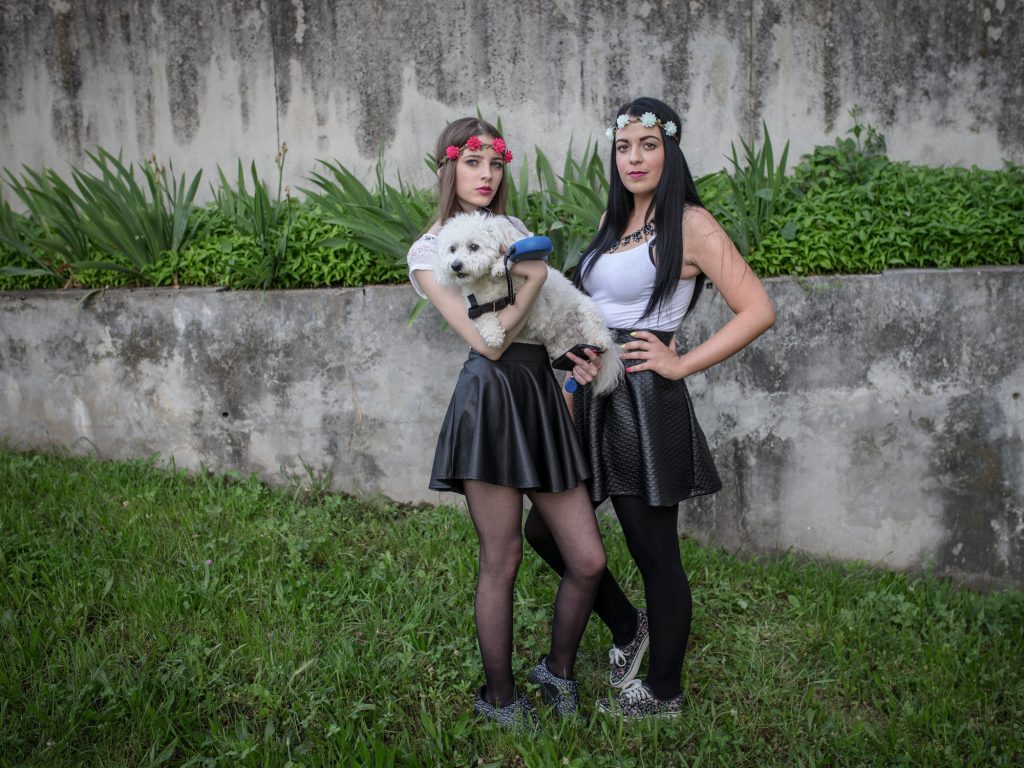
Vivien and Cintia in front of the “white” house under No.19.
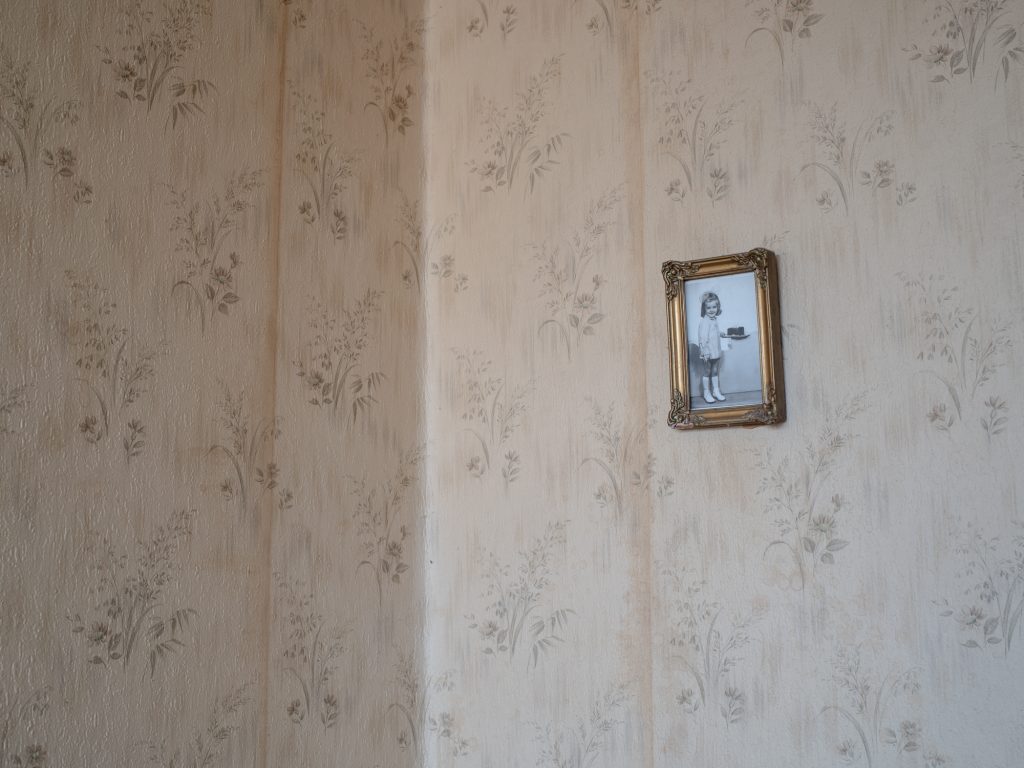
Childhood portrait of Maria Pethő in her apartment of the “red” house under No.5, located in the “A” wing of the estate. Maria and her late husband moved in to this apartment in July, 1974. She has lived alone for the past three years.
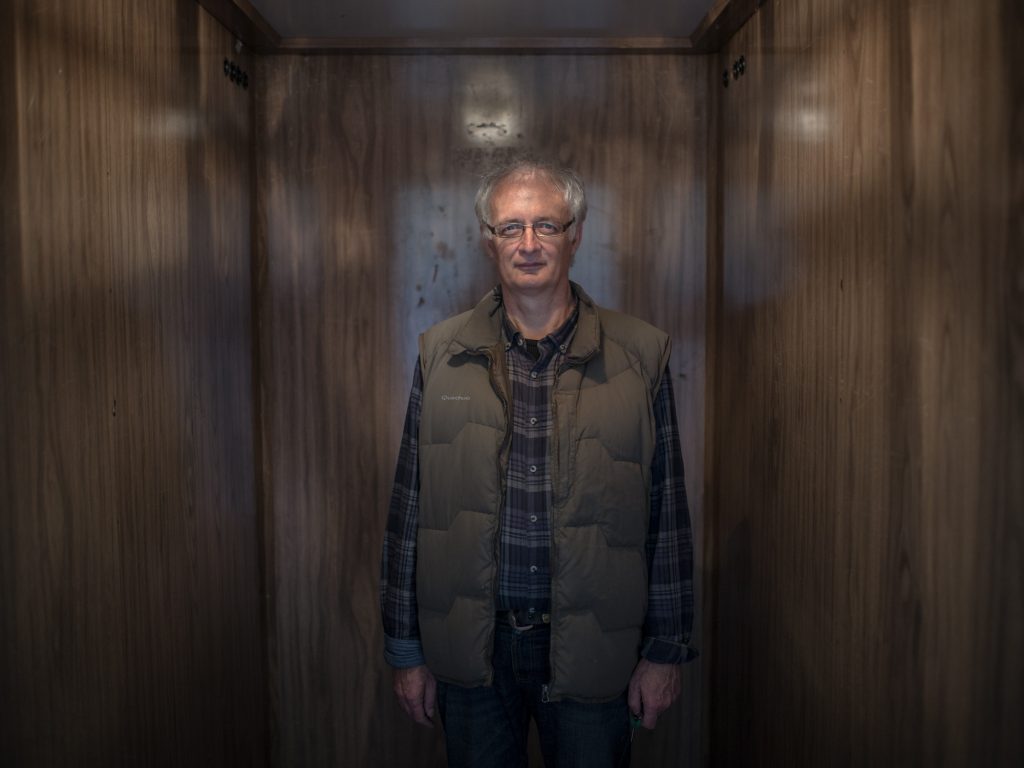
Ferenc Pintér is the community representative of more than one Y-houses.
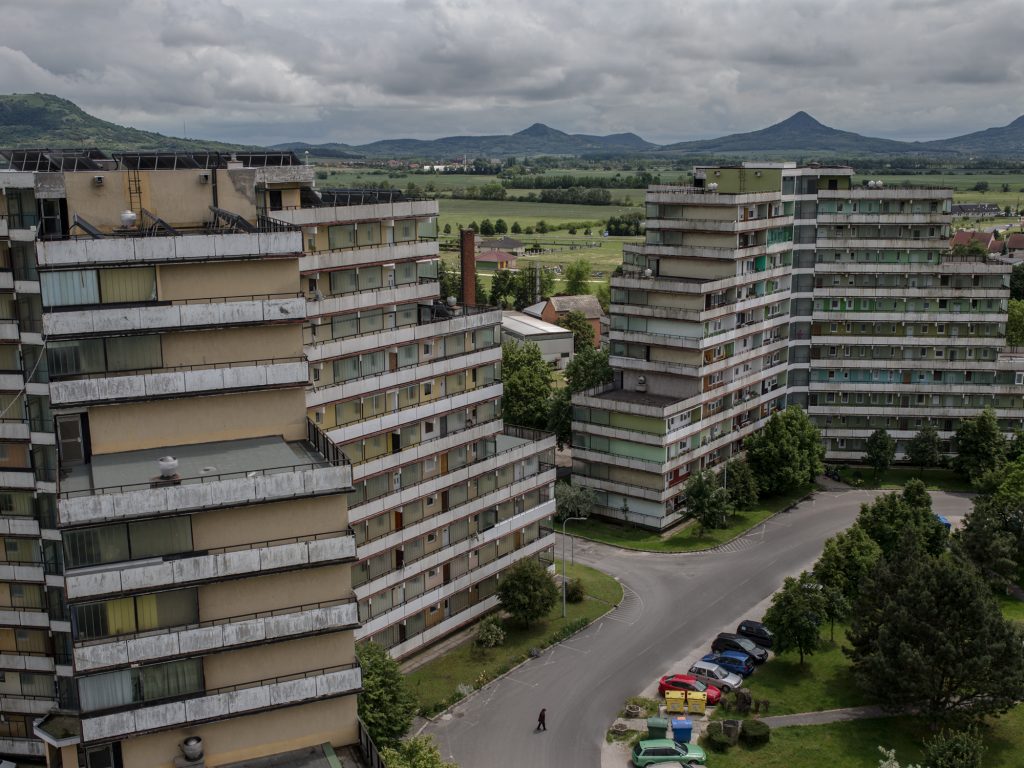
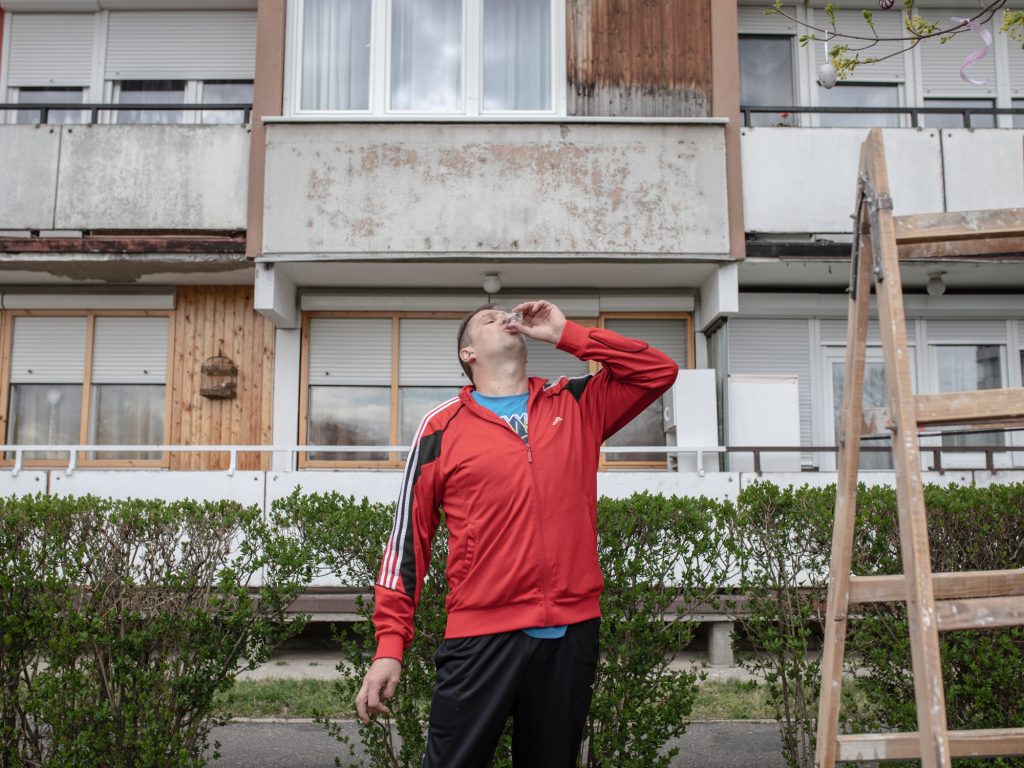
Y-houses's resident drinks a home brewed palinka after the decoration of traditional easter tree.
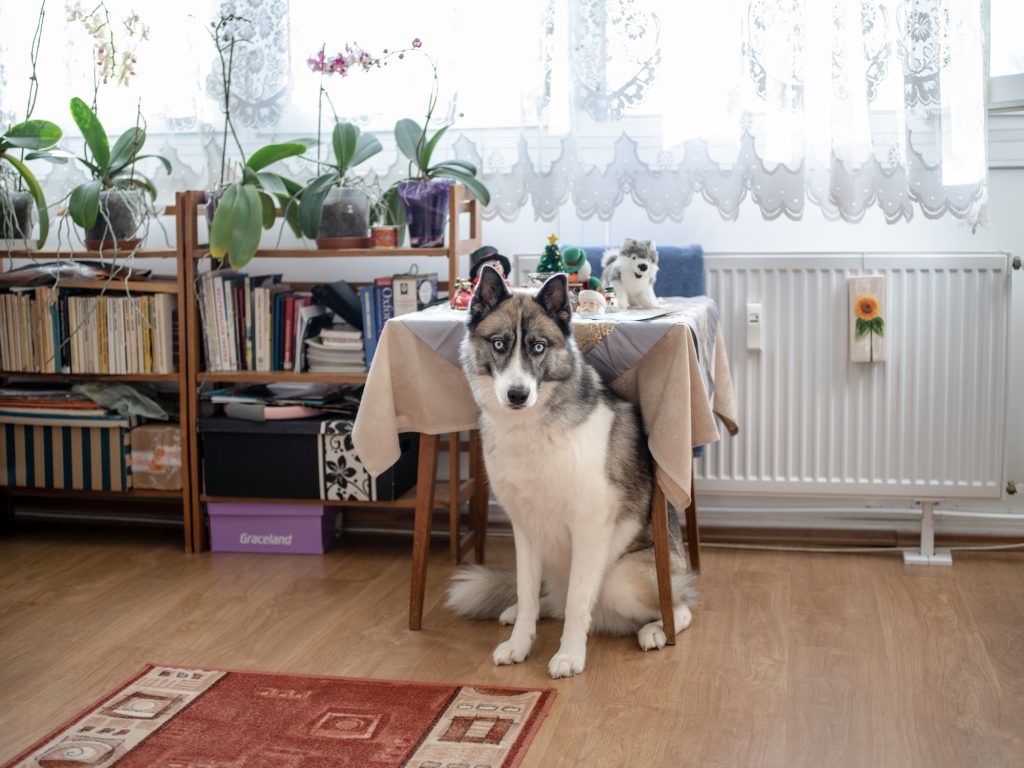
Katalin's dog sits in her apartment located in the "A" wing of the "yellow" building under No.17.
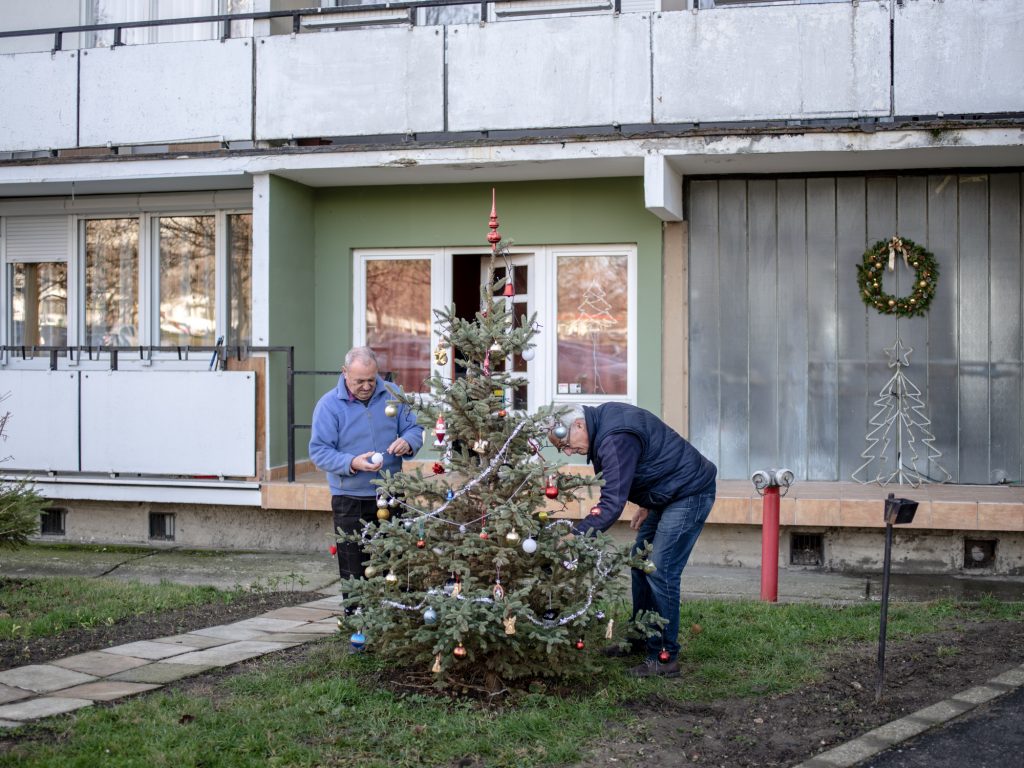
Ferenc Pintér community representative and László Kovács decorating the Christmas tree of the house in the entrance hall of the “green” building under No.11.
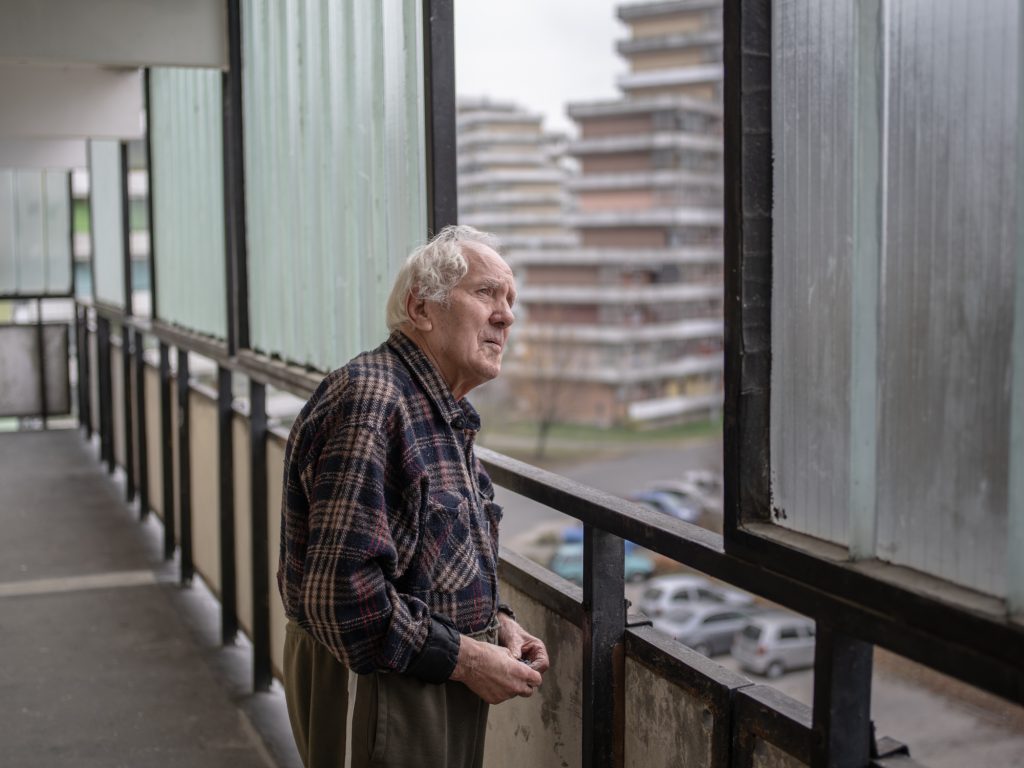
Erno Kamondi, "yellow" house under No.9.
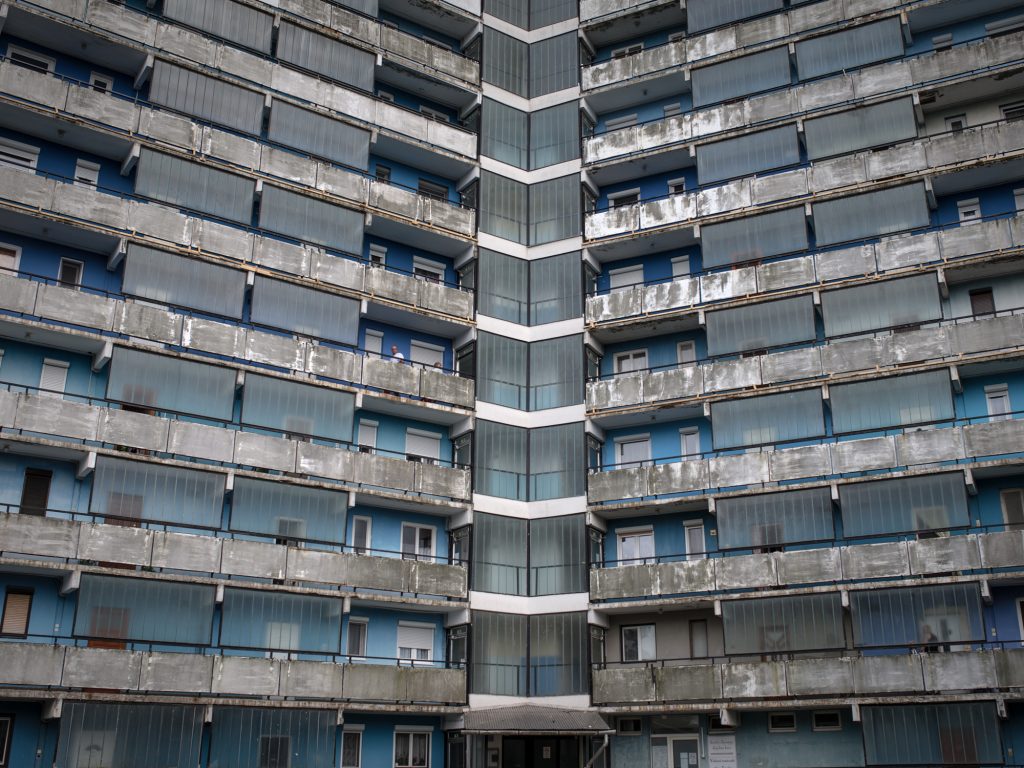
The entrance of the “blue” house under No.1. The 10 plus 1 storey Y-Houses were built at the Eastern edge of the city, where the late housing estate, called “Bauxite town” had been erected.
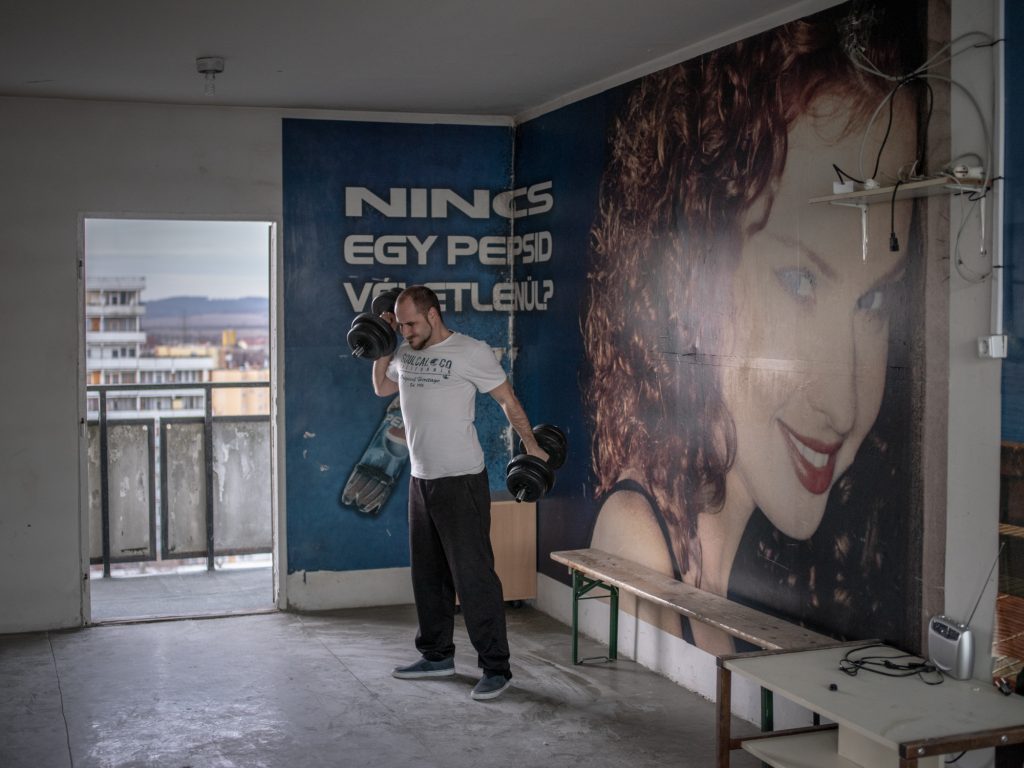
Krisztián Nagy in the workout area of the “yellow” house, under No.9. The uppermost floors of the Y-Houses were designed to be communal spaces.
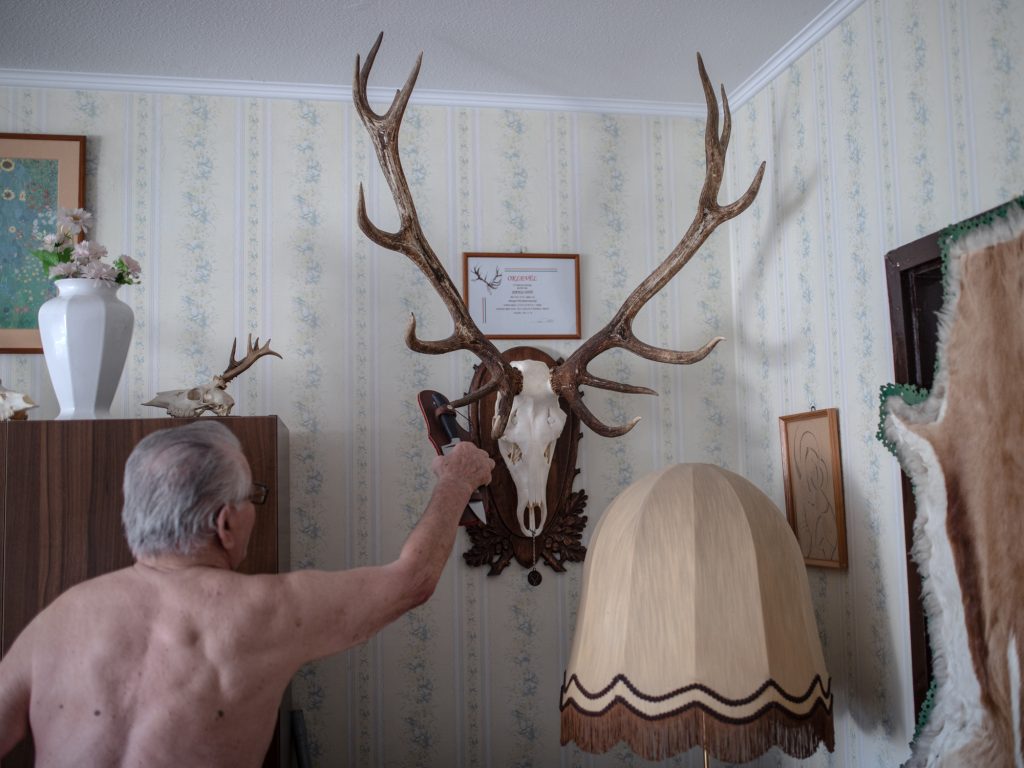
Ottó Hatos, aged 81 has moved into the “C” wing of the “red” house under No.5 following his wife’s death, who died after their son was already deceased.
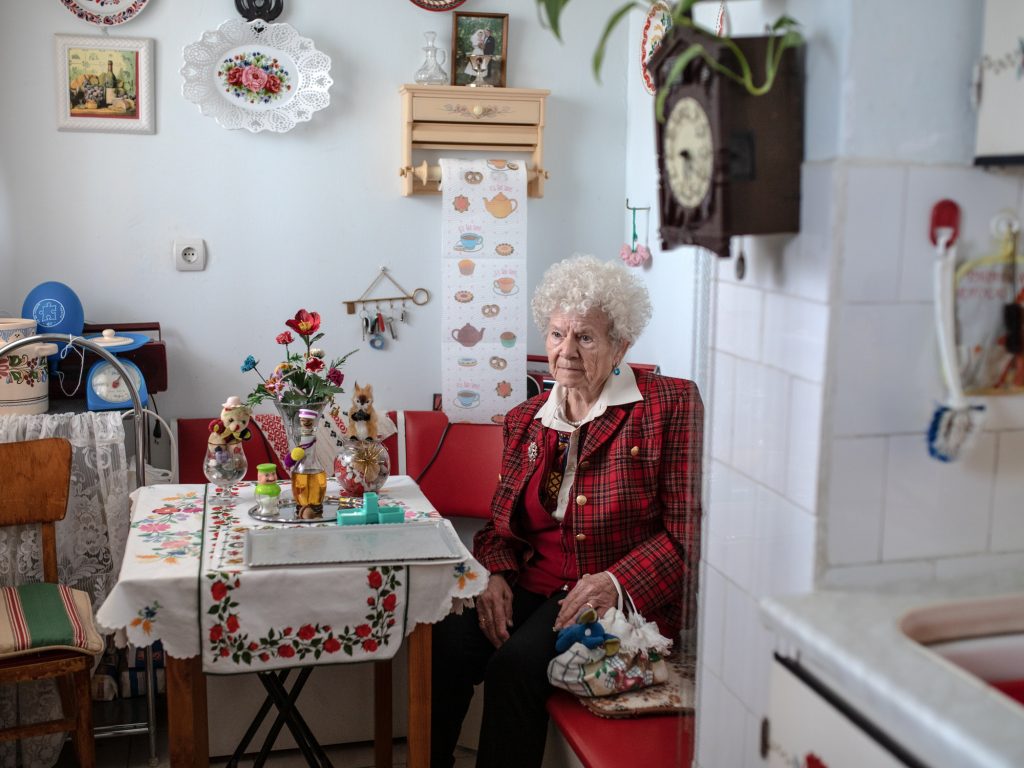
Mrs. Istvan Katalin has been living in this apartment for over 44 years. Her husband passed away 25 years ago, and she has been living alone since that time.
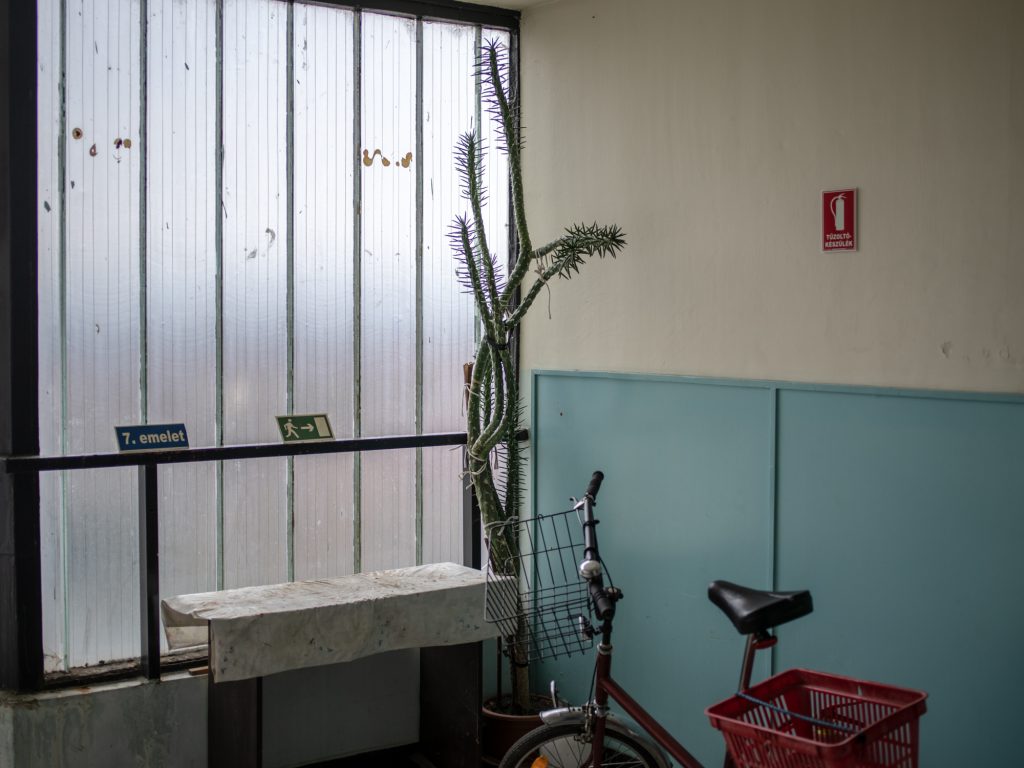
Turn of a staircase in the “yellow” building under No.9. When the bauxite mine was closed, the houses ownership was assigned to the local government, but owing to difficulties with their maintenance the apartments have continuously been sold out.
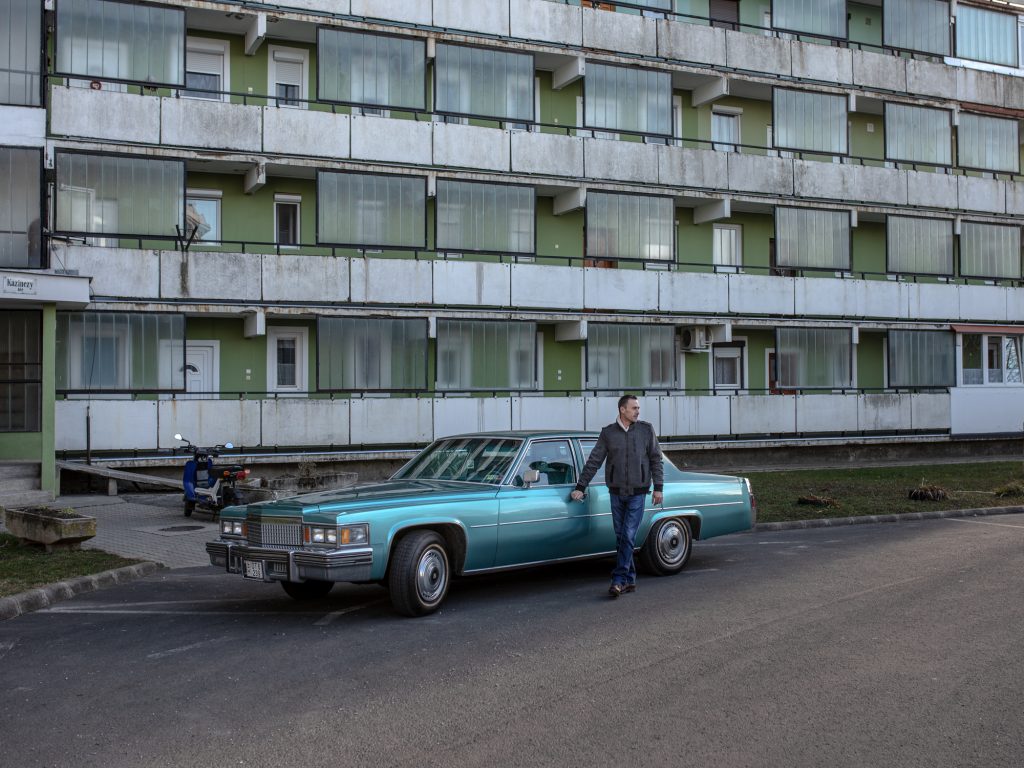
Futó next to his Cadillac at the entrance of the “green” house under No.7. The construction of the Y-Houses was an attempt to provide better conditions for the residents. The buildings represented a quality superior to that of the estates consisting of panel houses.

Tibor Halász stands in the front of the “green” house under No.7. Originally the houses were colored in different schemes but they have changed a lot both from the outside and regarding their tenants. Although many residents have lived here since the apartments were assigned to their tenants for the first time, fluctuation of the residents is speeding up.
Ypsilons
The “Y-Houses” represent not only an architectural characteristic of Tapolca, but also a powerful example of rural communities. The buildings, often being both praised and criticised, provided a new impulse to the city of Tapolca in the 1970s. Between 1972 and 1986 nine uniquely designed miners’ houses were erected in the outskirts of the city. Each gave room to one hundred apartments. The initial momentum faded by now and the once modern district became greyish. The houses need renovating but its cost burdens the city with unsolvable challenges. The communities living among the walls, however, remained strong. Most of the residents have lived here since the apartments of the bauxite mine complex were assigned to their tenants.
“Bad neighbourhood – Turkish curse” is the old aphorism that could apply here any time. Thus the easily noticeable solidarity and the strength of the local community has a prominent role in the Ypsilons. One building gives space to a number of people that could easily live in a micro-village. The whole complex houses a population that could make up a village of quite a noticeable size.
